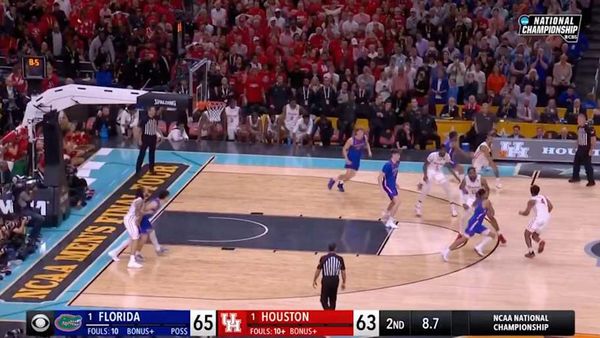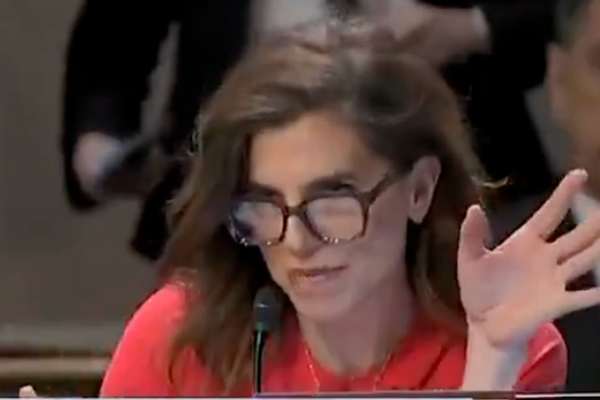
From his small, windowless office across from the teachers’ lounge at Dana Hills high school in Orange county, California, Mike Darnold has witnessed first-hand the rise of fentanyl as a brutal teen killer.
Darnold, 80, is a former police officer and recovering alcoholic. He’s spent the last 16 years helping save students whose lives have veered out of control because of drugs and alcohol. But it wasn’t until recently that his job became such an immediate life-and-death battle.
Before 2020, Darnold had rarely heard of students dying of drug overdoses. But since then, drug deaths – mostly caused by counterfeit pills spiked with fentanyl – have become one the leading killers of 14- to 18-year-olds nationwide. At Dana Hills high, there have been five deaths in the last four years alone.
One teenager was a popular and ambitious cheerleader in her junior year; another was a freshman football player. One was an incoming high school student who never made it to the first day.
Eddie Baeder could have been No 6. When Eddie first met Darnold last fall, he was only 14, getting ready to enter Dana Hills high as a freshman. But already, it felt like his life was spinning out of control.
Eddie loved football, baseball and wrestling and had a job at a dog daycare. He also had a tendency to want to escape difficult feelings, including grief over the death of his birth mother, who did not have custody of him but was still in contact, and the suicide of a close friend. At the time, the teen was deep into a tailspin of drug and alcohol abuse, throwing any kind of mind-altering substance he could find into his body, including vodka and whatever else his friends gave him.
“I was just looking for the next high,” he said.
Eddie is one of dozens of kids that Darnold has helped climb out of substance abuse. As high schools around the country scramble to set up education programs to cope with the rise in teen fentanyl deaths, Dana Hills high has been ahead of the game. Within these walls, Darnold has spent more than a decade devising ways for teens and parents to deal with the underlying issues that drive substance abuse.
To get there, he’s developed after-school programs that help teens find fulfilling alternatives to drug use, such as movie nights, beach parties and volunteering events. He also runs a series of workshops for parents that tackle one of the biggest barriers he sees when it comes to overcoming drug use: effective communication and boundary-setting with their kids.
Now, Darnold spends his days driving kids to Alcoholics Anonymous meetings and organizing teen gatherings, in part because he wants to give back some of the wisdom and help he got overcoming his own alcoholism 44 years ago.
“It’s gratifying. I love it,” said Darnold. “I’m like the glue that brings it all together. It’s a good feeling to go to bed tired, because I’ve accomplished something.”
A deadly supply
With its blocky 1970s architecture and sprawling athletic fields, Dana Hills high feels like a southern California idyll. The highly ranked school, with a student body of 2,000, sits in an upscale part of Orange county so close to the Pacific that it has a competitive surfing team and a year-long marine ecology program.
But Orange county has been a national hotspot for teen deaths from fentanyl-laced pills. Opioid deaths among youth aged 15-19 in the county climbed from fewer than six in 2019 to 33 in 2021 and 20 in 2022, according to county statistics published by the state.
It’s part of a tragic pattern playing out across the country. An average of 22 high school-aged teens died of overdoses each week in the United States in 2022, the most recent year for which statistics are available, according to a 2024 study by researchers from the University of California at Los Angeles and Harvard. The same study found that the overdose rate among high school-aged kids doubled between 2019 and 2022, the most recent year for which data was available – even though surveys show far fewer teens are using drugs than in previous decades.
Southern California was one of the first places to be hit with multiple teen overdoses from fake pills. The reasons for this are still emerging, but experts believe it’s partly due to the region being relatively wealthy, meaning young people have access to money to buy drugs, as well as its proximity to the border with Mexico, where much of the fentanyl supply is coming from. Overdose hotspots have recently cropped up in other parts of the country, including suburban Loudoun county, Virginia, last year.
“New hotspots are popping up all the time,” said Joseph Friedman, one of the researchers involved in the UCLA study. “Counterfeit pills are spreading and the drug supply is particularly toxic.”
That’s because fentanyl, a super-powered synthetic opioid, has made the nation’s drug supply far more deadly – even for those who experiment with just one or two pills. A few granules of the white-powdered drug can be enough to kill.
Fentanyl is largely made in Mexico with chemicals bought from China, experts say, and drug cartels are bringing vast quantities into the US. Since January 2024 alone, a California drug taskforce has seized almost 4,638lbs of fentanyl powder and more than 8.8m fentanyl-laced pills.
Young people aren’t exactly seeking out the drug; rather, they’re buying what they think are pills such as Adderall, Xanax or Percocet from friends or ordering them on social media sites like Snapchat and Instagram.
Illegal sellers often pack fentanyl into tablets that can look exactly like these pharmaceutical pills, and since there is no quality control, a single tablet can contain enough to kill an unsuspecting teen, who may think they are experimenting with safe prescription drugs. It’s the reason many prefer to call these deaths “drug poisonings” instead of drug overdoses, because the taking of fentanyl is often accidental.
“These aren’t addicts that are dying from fentanyl,” said Darnold. “These are kids that are dying because they tried one thing one time.”
This harsh reality rings true for Eddie.
At a party the summer before his freshman year, he said, his friend gave him some pills and the next thing he knew, he was on the floor getting CPR from an adult who happened to have the opioid-reversal drug Narcan. Once revived, he ran away before the ambulance arrived, he said. He now believes the pills were probably tainted with fentanyl.
His parents didn’t know about the incident at the time, but they knew their son needed help. They struggled on their own to get him into a series of live-in treatment programs. Then they heard about Darnold and the parenting class he was teaching at Dana Hills high, and swiftly signed up.
“Things were crazy and we were afraid Eddie was going to die,” said his adoptive father, Ben Baeder.
Baeder and his wife, Cynthia, took Darnold’s class, called the Parent Project, and learned a whole new way to interact with Eddie.
Darnold advises parents to share a lot of love with their kids, compliment their achievements, learn to listen and communicate without arguing. That might not sound revolutionary – but it’s often the reminder parents need when they’re frustrated and struggling to deal with their child acting out, and need help setting boundaries.
In tandem with these affirmations, Darnold says, parents should also create a clear set of rules on drug use. He advises they take strong action to intervene if they think their kids are using, such as making them take a drug test, and setting brief but hard-hitting consequences for their actions. These include removing all sources of enjoyment – phones, toys, television, electronics and even favorite books – for a limited time if a parent’s rules are being broken. In some cases, he counsels parents that the only thing to do is to send their child away to a live-in addiction recovery program.
“We don’t talk about disciplining kids,” Darnold said. “We’re providing opportunities for them to learn from their mistakes.”
As he got to know Eddie’s parents, Darnold also quickly built a strong personal connection with Eddie, who is now 15 and has been sober from alcohol and drugs for 11 months. Several times a week, often at 6.30 in the morning, Darnold gives Eddie rides to AA meetings. The other adults in the meetings have taken the teenager under their wings.
“Everyone sees a 15-year-old as like a mascot,” said Ben Baeder. “They remember their 15-year-old selves and wish they had gotten sober earlier.”
Eddie said he now sees how deadly what he was doing was. He never plans to go back.
“I found out what it actually means to be sober,” said Eddie, who describes Darnold as like a grandfather to him. “I figured out that if I kept doing what I was doing, I was going to die.”
On the frontlines of the fight to save lives
By the time Amy Neville met Darnold, it was already too late for her son Alex.
In 2020, Alex Neville was 14 and, like Eddie, getting ready to enter Dana Hills high. He was a bright kid, who loved to skateboard and study topics like the civil war.
That summer, Alex admitted to his parents that he was taking oxycodone pills. His parents quickly made arrangements for their son to enter a live-in treatment program by the end of that week, Amy Neville said.
What neither Alex nor his parents knew was that the oxycodone pills Alex was buying on Snapchat were fake, and filled with fentanyl. Before the week was up, the parents woke to find Alex dead in his bedroom.
Since then, Neville has joined Darnold on the frontlines of preventing similar deaths. She has given talks to students at every grade level at Dana Hills high and dozens of other high schools around the country. She shows a film she helped produce that includes her son’s story, Dead on Arrival, explaining the dangers of fentanyl and fake pills.
“As the mom of a kid that died just trying to experiment, I wish I could shake you and make it real to you,” she tearfully tells students in the film. Alex “never intended for me to find him on his bedroom floor. He never intended for his dad to have to administer CPR while we were waiting for the paramedics. Alex never intended for me to see him wheeled away on a stretcher.”
Film screenings like these are the latest iteration of a community-led drug education push that began years ago in Dana Point, home of Dana Hills high.
Darnold works at the high school but is under a contract with the city government, which means he works with kids and families but doesn’t report directly to the school. Instead, he reports to Mike Killebrew, city manager of Dana Point, who has also long been involved in drug awareness efforts.
Killebrew remembers a pivotal moment about a dozen years ago. He was on his way to a breakfast meeting when he got a call from Darnold saying there was an emergency, and he needed to come to Darnold’s office at school. He arrived to find several students crying their eyes out. A classmate had died of an overdose. At the time, such deaths were rare – this had been perhaps the only overdose death at the school before the fentanyl crisis emerged.
The students had come to Darnold because they were determined to do something to prevent other kids from getting hurt by drugs. As a result, they launched Dana Point’s SOS club – short for Save Our Students – which gives teens opportunities to “hang out” and “party” that don’t involve alcohol or drugs.
The city-sponsored club is still highly active today, with Darnold helping its student leaders organize parties and outings, or community service activities like decorating floats for local parades and helping out at the city’s annual Concerts in the Park series.
“One of our mantras has been: a tired kid is a good kid,” said Killebrew.
All the interventions seem to have made a difference. The school has not had a drug death in two years.
Dana Hills high may be making progress, but the fentanyl crisis isn’t over. Overdose deaths remain stubbornly high across the US. The White House has urged schools to intensify their drug prevention efforts and to stock Narcan on campus to respond to overdoses. A new California law is requiring schools to develop overdose death prevention plans.
For Darnold, the solution won’t be as simple as stopping drugs coming over the southern border, or creating the perfect anti-drug campaign. He says the root problem is that people of all ages are seeking drugs as a quick fix to avoid facing their feelings. Young people in particular need more options for ways to feel good.
“Fentanyl is coming over the border by the ton and our kids are taking it,” he said. “But the problem isn’t Mexico. It isn’t even the fentanyl. The problem is we’ve got a whole bunch of people in America who are taking a lot of drugs. People take drugs because they want to change the way they feel.”
Sports, youth activities and service projects are all ways to address that root need, he says.
“What we’re doing is going all out,” he said. “We’re trying to reach every segment of our population on campus with education and prevention resources. I think everybody needs to do as much as Dana Hills high school.”
• In the US, call or text SAMHSA’s National Helpline at 988. In the UK, Action on Addiction is available on 0300 330 0659. In Australia, the National Alcohol and Other Drug Hotline is at 1800 250 015; families and friends can seek help at Family Drug Support Australia at 1300 368 186







